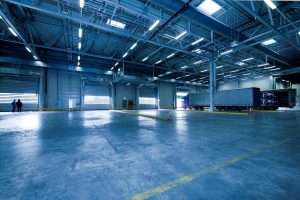You may have considered investing in commercial real estate and even industrial property. Industrial property is one of the three primary assets of commercial real estate. Most us are comfortable with residential property, but not everybody knows a lot about commercial real estate. Industrial real estate is constructed and utilized exclusively for business purposes. There are 3 major forms of commercial property: retail, industrial and office. 
So what is industrial real estate?
Industrial property is used for industrial purposes. It seems easy, but it comes in all sizes and shapes and covers an enormous assortment of company types. Industrial properties can generally be divided up into three dimensions: small, big and enormous.
- Small include single or double-story buildings built for industrial usage. These generally have a flexible interior area, typically a mixture of office and warehouse area.
- Large industrial Properties include moderate to large factories and warehouses which are made to fabricate or store products.
- On the bigger end of this scale would be the ‘big box’ industrial areas. These areas function as distribution and logistics centres that maintain and then disperse finished goods to shops or straight to clients. If you consider the kind of warehouse Amazon will have, you’ll understand.

What are the Advantages of Investing in commercial real property?
Purchasing industrial property leasing could be great business for the informed investor. Several key advantages include:
- Greater rents: Among the appealing Facets of investing in commercial real estate is the greater rental incomes and returns they provide. Industrial property is generally valued concerning the square yards available and may offer returns of 8 percent, in contrast to state only 4%-5% to a home.
- Quicker Leases: Industrial tenants are usually willing to commit to long-term leases, which provides investors with more security than a regular residential lease.
- Low-maintenance Buildings: Generally, a great Tenant will keep the construction to a high quality, since the look reflects on their enterprise. This implies industrial buildings may be comparatively low maintenance as the renter is very likely to attend to some maintenance problems quickly themselves.
What are the dangers?
It is important to Know the risks involved in investing in commercial real estate. Listed below are a couple of the major dangers you want to think about:
- Vacancy dangers: Industrial properties are considerably more vulnerable to market conditions than residential real estate. If a company closes and financial conditions are gloomy, investors must be ready for lengthy periods of vacancy.
- Expensive to Commit: Banks see industrial property as a riskier investment than so the price of borrowing is greater. Banks generally demand a larger deposit (approximately 30 percent) and interest levels are often greater than rates for residential properties.
- Obsolescence: The industrial sector is continuously evolving. This implies industrial buildings can easily become obsolete if the clearance height is too low, accessibility is restricted or the floor area unsuitable for contemporary machines.
Who invests?
Because of the amount of funds required to invest in the industrial marketplace, most investors would be the big players with deep pockets. That does not mean smaller shareholders are excluded. Owner-occupiers often see the benefit of buying their industrial area.